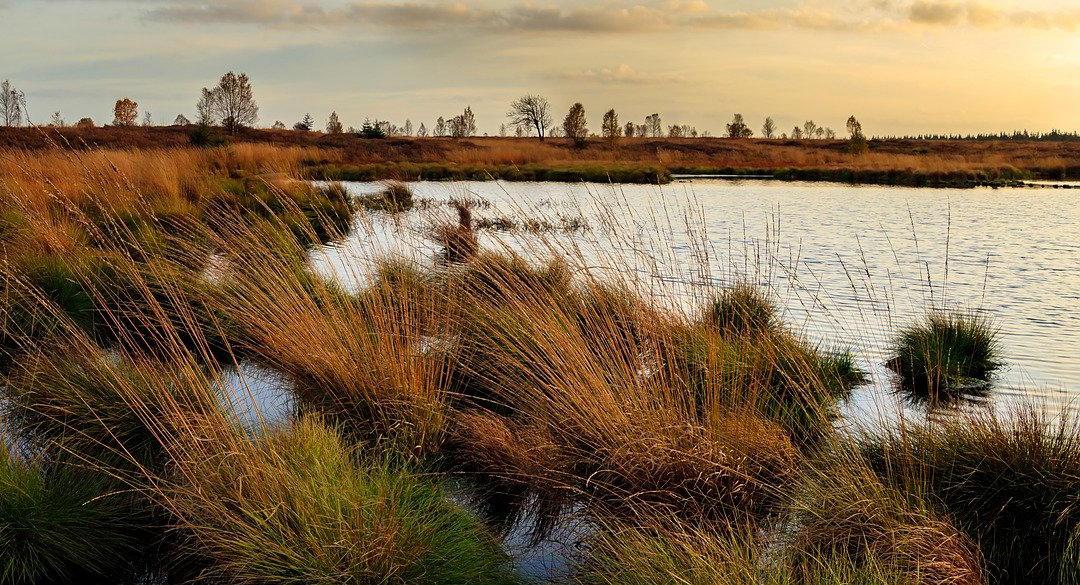
Did you know?
Vieux, Oud, Old, Viejo... when it comes
to cheese this adjective becomes
synonymous with character and flavour.
And BRUGGE VIEUX is a good example
of this. The master cheesemakers of
Belgian dairy cooperative Milcobel know
the ideal moment (10 to 12 months of
maturation) when every piece of this
very personal cheese is perfect for
consumption.Tick, tock, tick, tock... Brugge Vieux, when time is measured in taste
And how do we recognise this decisive moment? Only experts can identify it, by paying attention to the transformation of the initial curd, the evolution of the rind, the hardening of the texture, the appearance of certain white spots on the edges that correspond to small crystallizations of calcium...
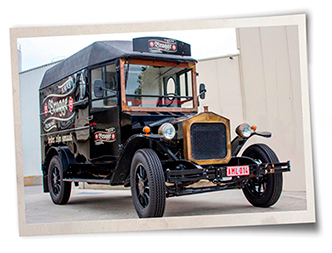
All these details are significant and
one must know how to “read” them
in order to obtain a specialty the
likes of BRUGGE VIEUX... cured and
full-bodied with a full flavour and
delicious fragrances.
one must know how to “read” them
in order to obtain a specialty the
likes of BRUGGE VIEUX... cured and
full-bodied with a full flavour and
delicious fragrances.
The large BRUGGE VIEUX wheels have a diameter of 40 cm and their shape seems to have been inspired by bread loaves from former times.
A tradition that knows no borders
BRUGGE VIEUX is a Gouda-type cheese, a Dutch variety
that is also produced with great success in Belgium, the
country of our protagonist.
The fact is that while the Dutch cheese tradition is undoubtedly more widely known, Belgium has a lot to say in this area. Cheese is widely consumed in a country that, despite not being very large, produces more than 600 different specialities. In this respect Belgium shares a number of fundamental elements with the Netherlands, including decisive moments in history, topography, climate and a tradition in dairy production that in both countries dates back to medieval times.
The fact is that while the Dutch cheese tradition is undoubtedly more widely known, Belgium has a lot to say in this area. Cheese is widely consumed in a country that, despite not being very large, produces more than 600 different specialities. In this respect Belgium shares a number of fundamental elements with the Netherlands, including decisive moments in history, topography, climate and a tradition in dairy production that in both countries dates back to medieval times.
Paradoxically, very little salt is
used in the production of a strong,
flavourful cheese like BRUGGE
VIEUX.
used in the production of a strong,
flavourful cheese like BRUGGE
VIEUX.
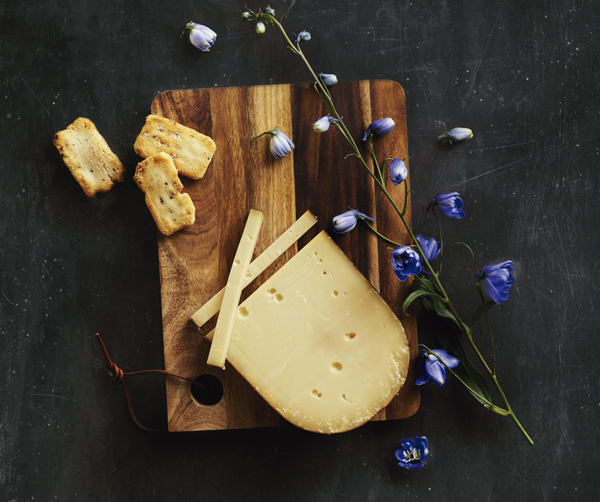

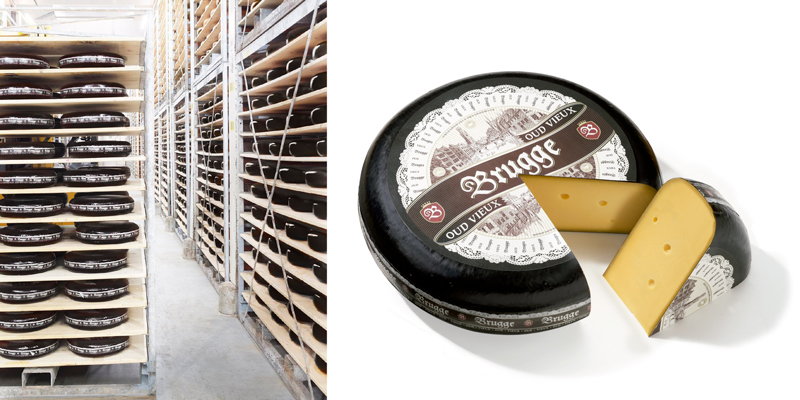
The similarities in topography and climate of these two countries are not minor considerations as they have
a decisive effect on cheese production. Like the Netherlands, the northern part of Belgium possesses land
that has been reclaimed from the sea, known as the polders. These are fertile lands that are blessed with
mild winters, relatively warm summers and frequent rainfall.
These characteristics favour the proliferation of abundant, fresh pastures, an indispensable factor when it comes to obtaining top quality milk, especially from cattle, the animal best adapted to the country’s conditions.
With this high-quality raw material Milcobel produces more than ten types of cheese under the Brugge Kaas brand name; a brand that has been presented with Nantwich Cheese Awards on more than one occasion.
These characteristics favour the proliferation of abundant, fresh pastures, an indispensable factor when it comes to obtaining top quality milk, especially from cattle, the animal best adapted to the country’s conditions.
With this high-quality raw material Milcobel produces more than ten types of cheese under the Brugge Kaas brand name; a brand that has been presented with Nantwich Cheese Awards on more than one occasion.
A name true to a palate
Brugge Kaas cheeses are produced using pasteurised cow’s milk in order to maintain the same organoleptic
characteristics throughout all pieces and in each variety. So when a consumer chooses BRUGGE VIEUX they
know they will enjoy the same exquisite taste that their palate recalls from previous occasions.
It is precisely pasteurised milk, as opposed to unpasteurised, that allows the producer to standardise values and composition, thereby making it possible to ensure specific flavours and textures that in turn are achieved through the discerning administration of maturation times.
In this sense, Gouda-type cheeses offer a wide range of varieties, depending on their ageing, and a wealth of options for cheese lovers, who can choose between younger varieties with light, flexible paste and sweet flavours, and older, more aged varieties with darker yellow paste, hard texture, and intense flavour with hints of nut, fruit and butter.
The scale begins -using their Dutch names- with Graskaas, meaning one month of maturation, and ends with Overjarig, meaning more than a year of maturation, and includes Jong, Jong belegen, Belegen, Extra belegen and Oud, the variety that concerns us here.
It is precisely pasteurised milk, as opposed to unpasteurised, that allows the producer to standardise values and composition, thereby making it possible to ensure specific flavours and textures that in turn are achieved through the discerning administration of maturation times.
In this sense, Gouda-type cheeses offer a wide range of varieties, depending on their ageing, and a wealth of options for cheese lovers, who can choose between younger varieties with light, flexible paste and sweet flavours, and older, more aged varieties with darker yellow paste, hard texture, and intense flavour with hints of nut, fruit and butter.
The scale begins -using their Dutch names- with Graskaas, meaning one month of maturation, and ends with Overjarig, meaning more than a year of maturation, and includes Jong, Jong belegen, Belegen, Extra belegen and Oud, the variety that concerns us here.
This means that BRUGGE OUD, or BRUGGE VIEUX,
is, with 10-12 months of maturation, among the
more ‘vintage’ cheeses, a fact that is noticeable in a
distinctive, convincing flavour that is recognizable
and memorable in all cheeseboards or when eaten as
part of a snack, sandwich or salad. When included in
other recipes it provides the unique touch that makes
a dish really stand out.
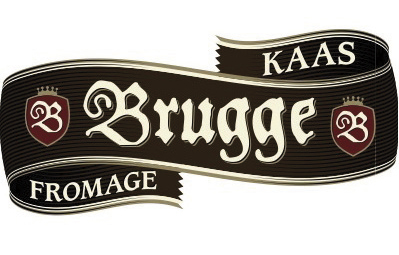


 This website has been made possible thanks to the contribution of a team of professionals who love cheese, its origins and the pleasure of eating it.
This website has been made possible thanks to the contribution of a team of professionals who love cheese, its origins and the pleasure of eating it.